1960s
Follies of the Madmen #469
Why the dog?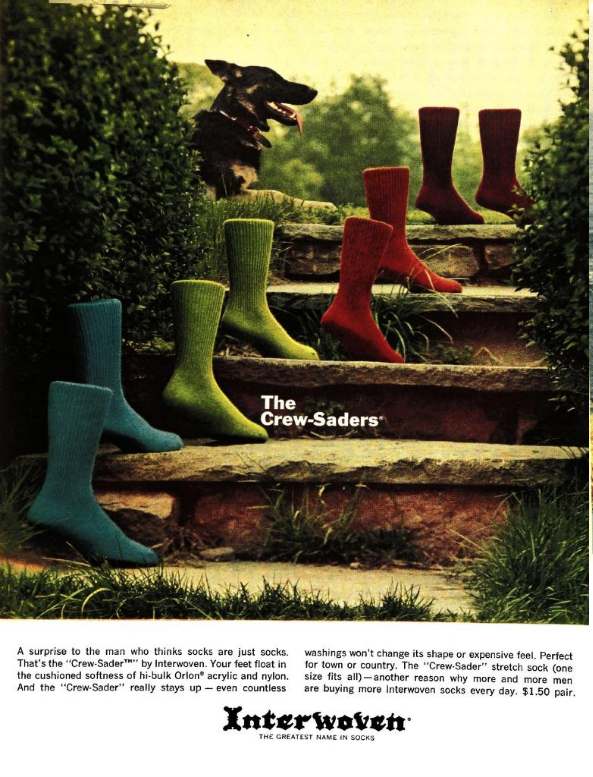
Source.
Posted By: Paul - Thu Mar 12, 2020 -
Comments (6)
Category: Business, Advertising, Fashion, Dogs, 1960s
Bollywood Beatles
Posted By: Paul - Tue Mar 10, 2020 -
Comments (2)
Category: Music, Homages, Pastiches, Tributes and Borrowings, 1960s
Radioactive Vending Machine Tokens
Sometimes vendors would like to sell relatively high-value items in vending machines. That is, merchandise worth more than a candy bar. Nowadays that's not a problem because there's technology that can scan paper currency or read credit cards, making larger transactions possible.But back in the 1960s, vending machines relied on coins for payment, so selling high-value merchandise wasn't practical. Especially since the machines could only measure weight, shape, and size to determine if the coins were real — and these characteristics are easy to fake with low-value blanks.
The British printing company Thomas de la Rue devised a solution: radioactive vending machine tokens.
Its researchers realized it would be possible to create tokens made out of layers of radioactive materials such as uranium and carbon14. These tokens would emit unique radioactive signatures that could be measured by Geiger counters inside a vending machine. Such tokens wouldn't be easy to forge. The company patented this idea in 1967.
I'm not aware that any vending machines accepting radioactive tokens were ever put into to use.
I imagine they would have suffered from the same problem that plagued other efforts to put radiation to practical, everyday use — such as the radioactive golf balls we posted about a few months ago (the radiation made it possible to find the balls if lost). The radiation from one token (or golf ball) wasn't a health hazard, but if a bunch of them were stored together, then the radiation did become a problem.
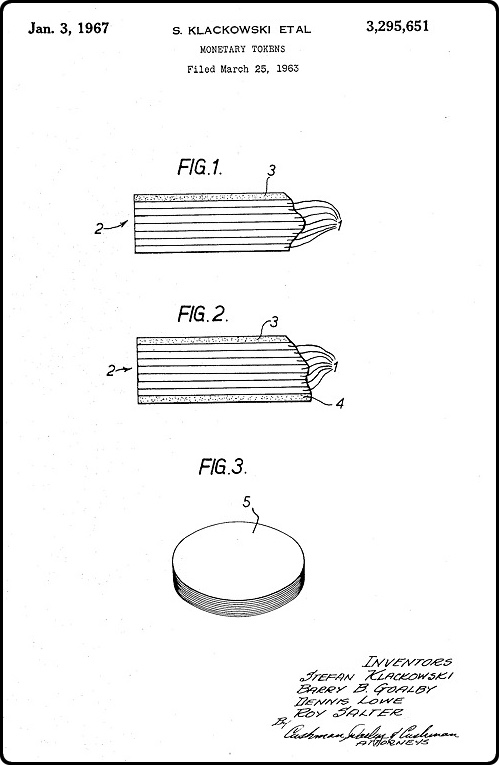
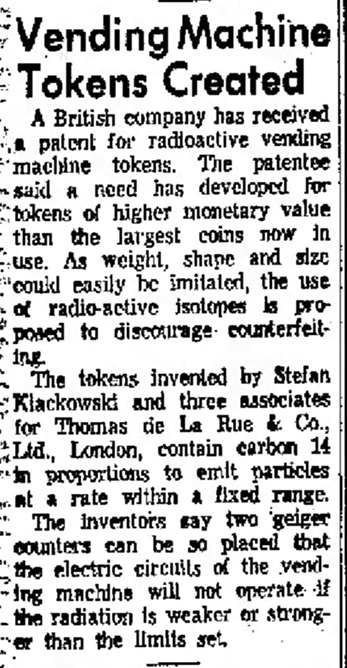
Nashua Telegraph - Jan 11, 1967
Posted By: Alex - Sun Mar 08, 2020 -
Comments (3)
Category: Inventions, Patents, Atomic Power and Other Nuclear Matters, 1960s
Dracula Cha-Cha-Cha
Posted By: Paul - Sat Mar 07, 2020 -
Comments (1)
Category: Humor, Music, 1960s, Fictional Monsters
Canned Wheat
In an effort to sell more wheat, the Kansas Wheat Commission invented canned wheat. It began selling it in 1961 under the brand name Redi-Wheat.By 1963, the product was acknowledged to have been a flop.
Perhaps the problem was that it wasn’t clear what canned wheat was. A kind of oatmeal in a can? I'm not sure. The only description I could find was in an article in the Muscatine Journal (Jan 12, 1962), and it really didn't shed much light on the matter:
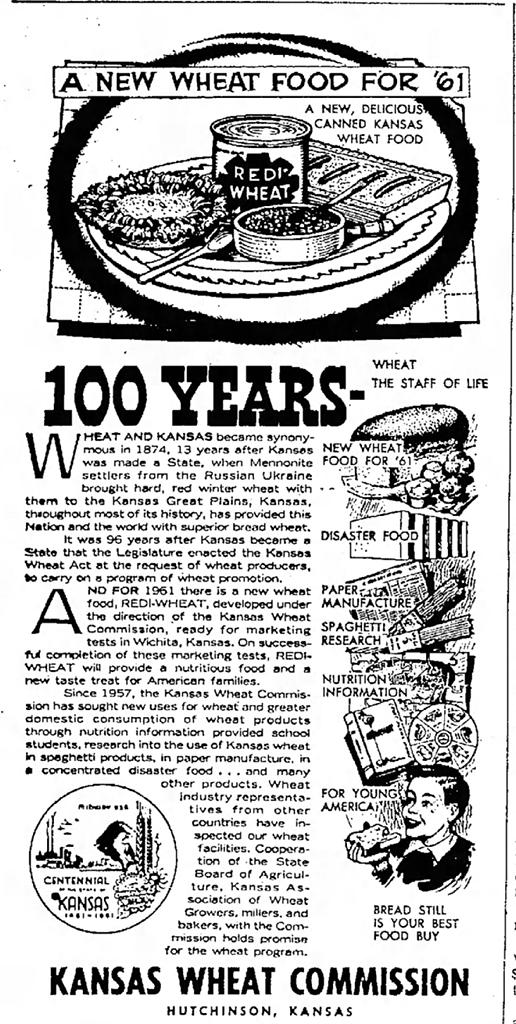
Emporia Gazette - Feb 23, 1961
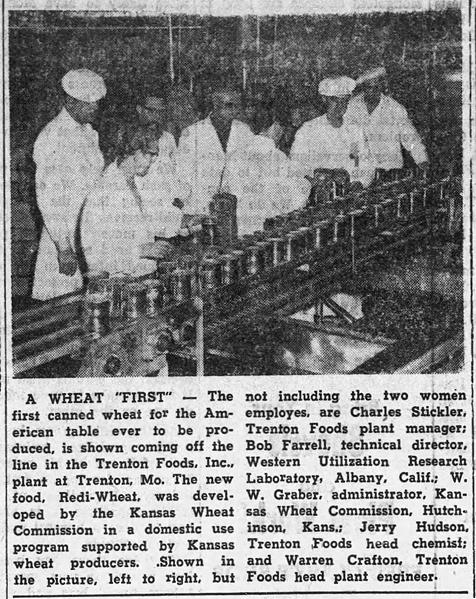
Council Grove Republican - Feb 22, 1961
(Note the caption names all the men in the photo, but purposefully excludes the two female employees)
Posted By: Alex - Sat Feb 29, 2020 -
Comments (10)
Category: Food, 1960s
Interama
A Utopian project in Miami that never materialized.Wikipedia article here.
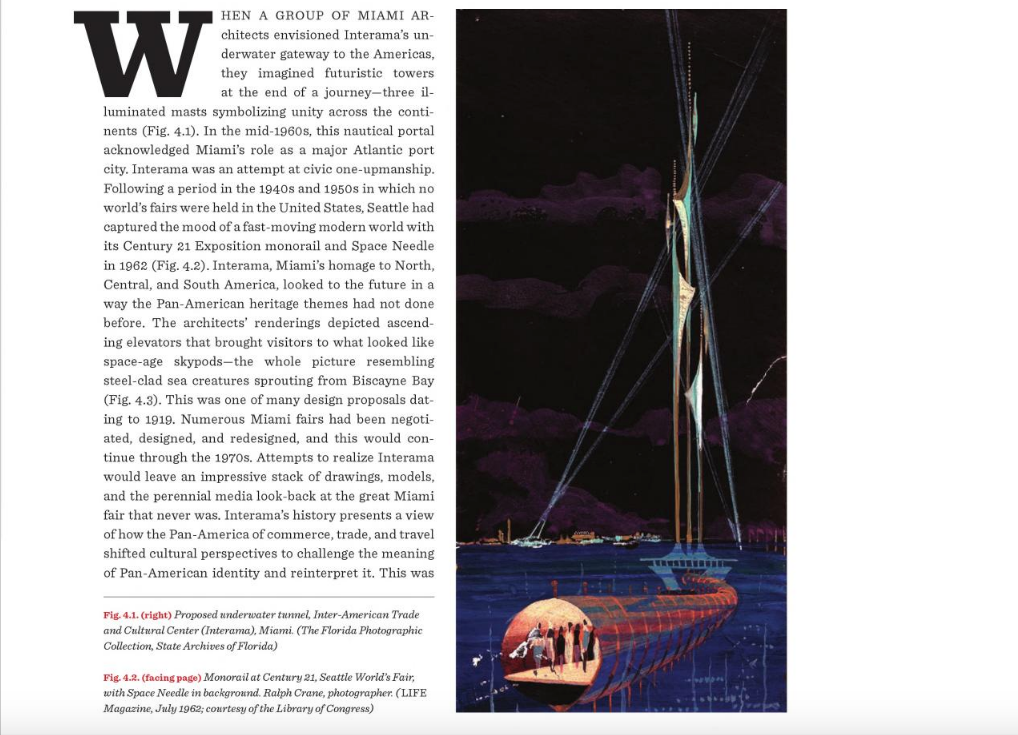
Posted By: Paul - Sat Feb 29, 2020 -
Comments (0)
Category: Architecture, Fairs, Amusement Parks, and Resorts, Government, Regionalism, 1960s
The Nothing Box
A gag gift from the early 1960s, created by inventor Jack Hurlbut: "When a button is pressed the lights flash, the dials spin, the switches turn—and nothing happens."It briefly made headlines in 1965 when a man took one with him on a flight, and was promptly detained on the suspicion that he was carrying a bomb.
The Nothing Box is another one of those vintage curiosities that seem to have completely disappeared. I can't find any evidence that one of them still exists.
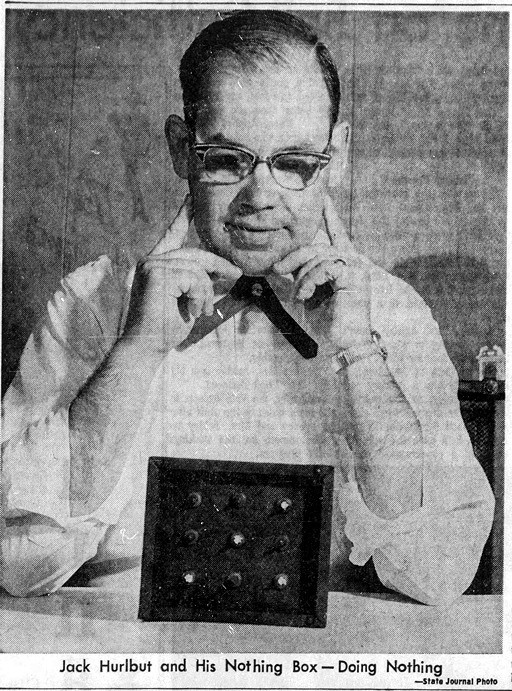
Wisconsin State Journal - May 18, 1964
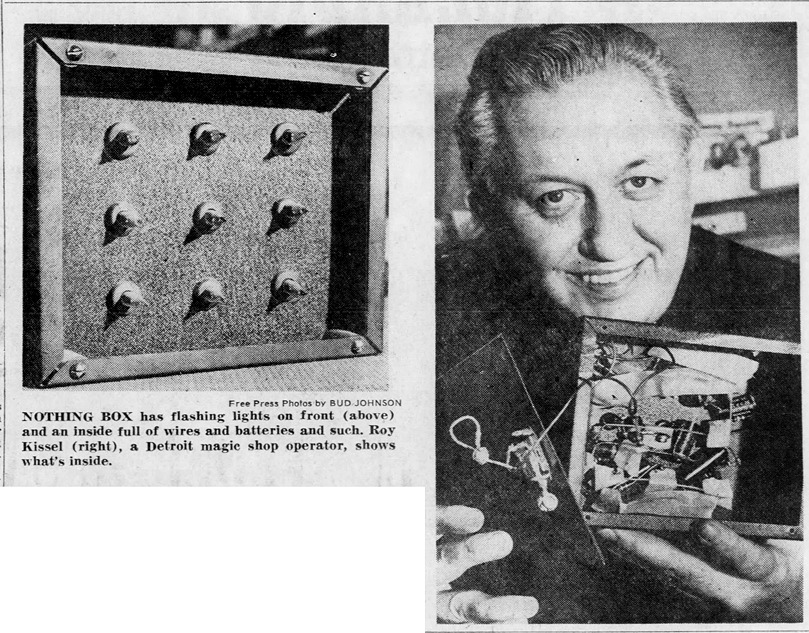
Detroit Free Press - Dec 28, 1965
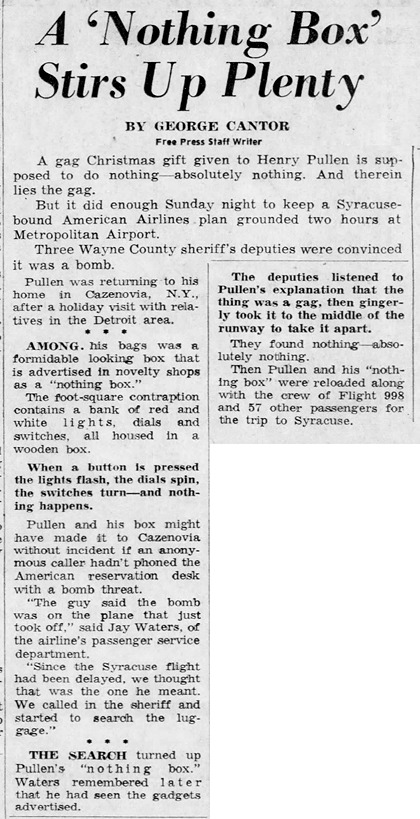
Detroit Free Press - Dec 28, 1965
Posted By: Alex - Fri Feb 21, 2020 -
Comments (4)
Category: Inventions, 1960s
Relationship of noise tolerance to martini consumption
Back in the sixties, researchers weren't afraid to tackle the really important questions...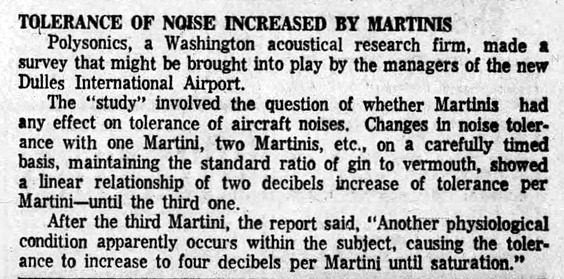
Knoxville News Sentinel - Dec 2, 1962
Posted By: Alex - Mon Feb 17, 2020 -
Comments (6)
Category: Science, 1960s, Alcohol, Cacophony, Dissonance, White Noise and Other Sonic Assaults
DIY Bikini
Posted By: Paul - Mon Feb 17, 2020 -
Comments (1)
Category: Beauty, Ugliness and Other Aesthetic Issues, Contests, Races and Other Competitions, Fashion, 1960s
Sprink
I wonder how much consumer research this company did before deciding to name their product 'Sprink'. I'm guessing they thought it was a catchy shortened form of 'sprinkle'. But the problem is that the name sounds too much like 'Stink', which is exactly the wrong association for a room-rug freshener. Must be why it doesn't seem to have been on the market more than a few months.
Rocky Mount Telegram - June 18, 1963

Cincinnati Enquirer - Oct 21, 1962
Posted By: Alex - Fri Feb 14, 2020 -
Comments (2)
Category: Odd Names, Products, Fetishes, 1960s

| Who We Are |
|---|
| Alex Boese Alex is the creator and curator of the Museum of Hoaxes. He's also the author of various weird, non-fiction, science-themed books such as Elephants on Acid and Psychedelic Apes. Paul Di Filippo Paul has been paid to put weird ideas into fictional form for over thirty years, in his career as a noted science fiction writer. He has recently begun blogging on many curious topics with three fellow writers at The Inferior 4+1. Contact Us |




